巻号一覧

1 巻 (1981)
- 2 号 p. 85-
- 1 号 p. 2-
1 巻, 1 号
選択された号の論文の4件中1~4を表示しています
- |<
- <
- 1
- >
- >|
会長講演
-
大橋 博司1981 年 1 巻 1 号 p. 2-11
発行日: 1981年
公開日: 2006/08/11
ジャーナル フリーPDF形式でダウンロード (1560K)
原著
-
柏木 敏宏, 長谷川 恒雄1981 年 1 巻 1 号 p. 12-19
発行日: 1981年
公開日: 2006/08/11
ジャーナル フリーThe aim of language therapy in aphasia is to assist the patient to regain his independence in their daily life as much as possible. This aim is achieved by utilizing the following four functions of language therapy :
(1) reconstruction of once-disturbed neurolinguistic functions, (2) development and practice of compensatory methods of communication, (3) counseling of the patient's family, and (4) promoting the patient's acceptance of his disorder by experiencing the process of language therapy itself.
In the present paper, language therapy for aphasia practised in Izu Nirayama Rehabilitation Hospital during the past five years is briefly reported and discussed, with special reference to reconstruction of neurolinguistic functions.
In order to reconstruct disturbed neurolinguistic functions, the stimulation method proposed by Schuell, et al (1964) has been adopted in our hospital. Stimuli and responses may be verbal or nonverbal. The stimulation method is considered to be effective for language recovery as long as either stimulus or response is verbal, and a positive response is drawn from patients.
The stimuli are categorized into two types, (1) the therapy stimuli, which are controlled and provided by therapists, and (2) the environmental stimuli, which are not controlled. It is supposedly effective to offer patients not only efficient therapy stimuli, but also abundant oppotunities to respond to environmental stimuli.
Importance of stimulation from multi-modalities, especially from the intact modalities, is emphasized. For example, in the therapy for disturbance in writing kanas, a meaning is artificially attached to each kana, so that the kanji processor, which is neurolinguistically different from the kana processor can be utilized. Importance of utilizing the contextual information, which is a function of the whole brain at large, is also mentioned.
In order to activate general brain functions, activities such as playing games before or along with language therapy are important.
Finally the statistical data on aphasic patients, speech therapists, and so forth in our hospital from 1974 to 1979 are presented.抄録全体を表示PDF形式でダウンロード (1303K) -
進藤 美津子, 田中 美郷1981 年 1 巻 1 号 p. 20-27
発行日: 1981年
公開日: 2006/08/11
ジャーナル フリーIt is hypothesized that higher auditory cortical functions include the two coding system —phonemic and musical— proposed by Luria, and a third coding system that serves for cognition of environmental sounds and auditory space. The purpose of the present paper is to report a test for the third coding system devised in our laboratory, and its application to a developmental study on space cognition in children. The test material was a series of sounds, which were stereophonically recorded by a tape recorder (SONY TC-3000 SD) by the side of a rail road crossing, including noises of automobiles and a motorcycle rolling over the rail road crossing, sounds of the crossing signals, and children's shouts.
The subjects were sixty normal pupils ranging from six to twelve years old and sixteen healthy adults with normal hearing. They were asked to identify the sounds presented binaurally through headphones (Aurex HR-XI) from the same tape recorder used for the recording, and to reconstruct the space where the recording was made.
The results obtained were as follows: (1) The identification of the sounds depended on their familiarity as well as on the intensity and duration of the sounds. (2) A statistically significant difference of development of auditory space cognition was found between the group under nine years and the group above ten years of age. This finding supports Piaget's theory on the development of cognition of space in children.抄録全体を表示PDF形式でダウンロード (1094K)
失語症全国実態調査報告
-
全国実態調査委員会1981 年 1 巻 1 号 p. 39-42
発行日: 1981年
公開日: 2006/08/11
ジャーナル フリーPDF形式でダウンロード (600K)
- |<
- <
- 1
- >
- >|